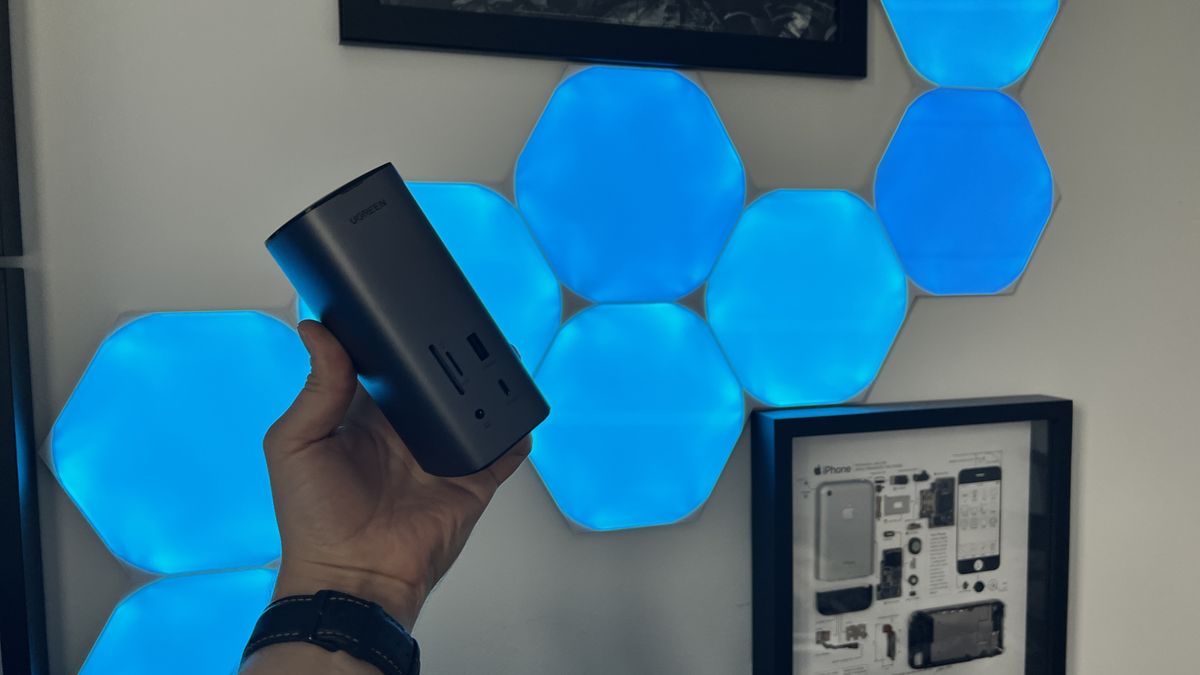Laptop Mag Verdict
Ugreen’s 13-in-1 docking station is an impressive piece of kit for expanding the I/O in your work-from-home setup. The chassis is refined and rocks a smaller size for better portability, and the multitude of ports further extends its versatility.
Pros
- +
Great selection of ports
- +
Sleek design
- +
Very portable
- +
DisplayLink Support
- +
100W Power Delivery
Cons
- -
Expensive at $329
- -
Some compatibility issues
- -
No choice between HDMI and DP
Why you can trust Laptop Mag
The Ugreen 13-in-1 docking station throws up a middle finger to the ever dwindling I/O array on laptops and gives us what we all want: choice. A choice to plug in more peripherals, use expandable storage, and charge multiple devices — all from one simple, unassuming box.
Let’s be honest. Docking stations may not be the most exciting PC accessories, but they are vital to any work-from-home setup and help transformyour laptop to a desktop. Better yet, they can actually unlock some tricks you never thought your system could do.
So, let’s answer some simple questions about Ugreen’s dock. Can it deliver on being the key that unlocks a desktop experience from your laptop? Does its performance and ports make it worth the hefty investment? Find out below.
Ugreen 13-in-1 docking station price
The Ugreen 13-in-1 docking station is currently on sale for $329, but you can get that price down to $309 on Amazon with a discount coupon.
When comparing it to the competition, namely the Plugable USB-C Triply 4K Display Docking Station, this is a little pricey — especially when Plugable offers a greater port array (albeit with the USB-A ports all being round the back, making them a little less accessible).
So, its saving grace comes down to being able to beat the competition in three areas: a sleek chassis, the right choice of ports, and strong performance throughout.
Ugreen 13-in-1 docking station design
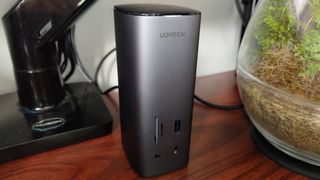
Ugreen starts strong with a refined, utilitarian shape with a gunmetal grey aluminum construction. At 5.1 x 2 x 2.2 inches, its small frame and dimmed power light is designed to fade away into the background of any setup — precisely what any good docking station should do.
Personally, I prefer this to the black, monolithic, 8-inch tall slab Plugable has created, and it’s also far easier to chuck into a backpack because of it.
The metallic build gives the whole thing a satisfying durable feel. All the ports are clearly labeled, and the arrangement of them is well thought out with the most-needed are featured in the front while any constant connections are relegated to the back for clean cable organization.
For an optimized work setup, Ugreen has smashed it out the park with the 13-in-1 docking station.
Ugreen 13-in-1 docking station ports

Time to talk ports. On the front, you’ll find a 3.5mm headphone/mic combo jack, a USB-A 3.2 Gen 2 port, a USB-C 3.2 Gen 2 (both with up to 10Gbps transfer rate support), and both SD and microSD card readers with supported transfer rates up to 104MB/s.

Flip round to the back and you’ll find a DisplayPort with 4K 60Hz support, two HDMI ports (one with up to 4K 60Hz and the second going up to 8K 30Hz support), an RJ45 Ethernet port with gigabit support, the PD port supporting up to 100W, the USB-C port for your laptop connection, and two more USB-A 3.2 sockets.
All in all, it’s a splendid spread of I/O, bar one omission that would have really elevated this to port perfection. We don’t get a choice of DP or HDMI. While I get many users won’t see that as a problem, those living the DP life will have to invest in some new cables.
Ugreen 13-in-1 docking station performance
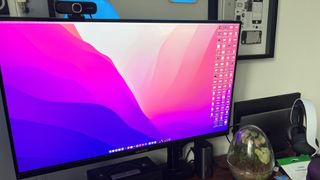
So, how is all of this in practice? Put simply, it may not be a Thunderbolt 4 speed freak like the Anker PowerExpand 5-in-1 that I transitioned from to the Ugreen, but the convenience is fantastic — and the pace of it all is still pretty damn good.
Each display output delivers as advertised on a 4K 60Hz picture, which makes for the tasty premise of a true three-display setup, looking like you’re about to hack into the matrix like a productivity machine.
To really put it through the wringer, I tried two setups: plugging it into the M1 MacBook Pro with my ElectriQ eiQ-32M4K144FS 32-inch 4K HDMI 2.1 gaming monitor, alongside a SanDisk extreme 1TB drive and a 512GB SD card. For what I would call a creative pro workload (video editing and Photoshop, on top of all my journalistic work), the Ugreen docking station more than held its own.
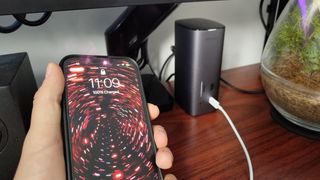
Not only that. Ugreen does not talk about the USB ports on the front packing power output, but the fact they actually do made these a godsend for charging my phone up quickly before heading out.
The second setup featured an Asus TUF Gaming F15, a Logitech G915 Lightspeed TKL keyboard, the G Pro wireless mouse and the Logitech G435 Lightspeed gaming headset — all of which had their USB wireless receivers plugged into the dock’s USB-A ports.
In the gamer setup, you’re not going to get frame rates higher than 60 fps, thanks to the 60Hz limit, but there was no lag on audio or keyboard inputs at all. For gaming where you don’t need a buttery smooth picture to remain competitive (maybe stay away from multiplayer titles), this does the job.
There is just one hitch with compatibility though. Ugreen is transparent about what is supported, and in reality, this isn't going to affect many of you. But just a heads up, the M2 MacBook Pro is not compatible with this docking station, which sucks given the color matching aluminum options.
Ugreen 13-in-1 docking station permissions
Uh oh! It’s an extra review section. We don’t typically discuss software permissions in our docking station reviews, but we’ve got to talk about it this time — and you’ll see why.
Whenever using third party software with a new accessory, accepting certain permissions is to be expected. However, the third-party DisplayLink manager software requests screen recording permission.
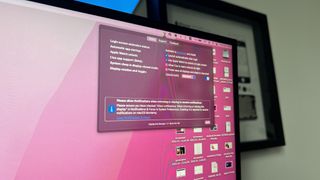
Clearly a little freaked out by this, I simply just denied this permission. However, the 13-in-1’s HDMI and DP ports do not output to any monitor until you do accept. Once permission is granted, the whole thing works really well, but it does ring some alarm bells.
DisplayLink does have a support page about why the software requires this. The most important part of it is:
“Approving it enables the DisplayLink to access the pixels it needs to render a mirrored or extended screen and send the pixels over USB from your computer to the DisplayLink display. It does not send any data or pixels back to DisplayLink.”
So if any Mac users do come across this alarming notification, there’s no need to fear it.
Bottom line
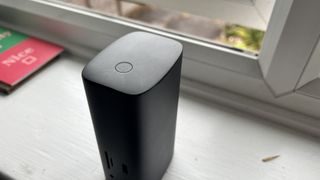
Ugreen’s 13-in-1 docking station is an impressive kit for expanding the I/O in your work from home setup. The chassis is refined and rocks a smaller size for better portability, and the multitude of ports on board makes it really useful.
The triple display support makes this ideal for any multitasking-intensive jobs and any creatives will warmly welcome the SD and microSD card slots.
Would we like it to be a bit cheaper? Sure.At $329, it is a little pricey and the Plugable option offers the same feature set for a cheaper price. But for what you get, this is a peripheral-expanding metal block of docking goodness that deserves a place on our list of best docking stations.

Jason brought a decade of tech and gaming journalism experience to his role as a writer at Laptop Mag, and he is now the Managing Editor of Computing at Tom's Guide. He takes a particular interest in writing articles and creating videos about laptops, headphones and games. He has previously written for Kotaku, Stuff and BBC Science Focus. In his spare time, you'll find Jason looking for good dogs to pet or thinking about eating pizza if he isn't already.
